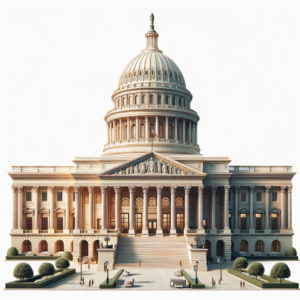Unveiling Local Law Changes: What You Need to Know Now!
In an ever-evolving legal landscape, local law changes can significantly impact residents and businesses alike. Understanding these changes is crucial for ensuring compliance and making informed decisions. This article delves into the importance of staying updated on local legislation, highlights recent updates affecting communities, and discusses the implications for businesses and economic development. Additionally, we will explore resources for staying informed, the role of public participation in shaping laws, and how to anticipate future changes.
Understanding the Importance of Staying Informed on Local Law Changes
Staying informed about local law changes is essential for both individuals and businesses. Local laws govern a wide array of daily activities, from zoning regulations and property taxes to public safety and environmental standards. Ignorance of these laws can lead to unintended violations, resulting in fines or legal repercussions. Furthermore, being aware of legislative changes allows residents to engage actively in their communities, advocating for policies that reflect their needs and values. In a democratic society, informed citizens are empowered to influence local governance, ensuring that laws serve the public interest effectively.
Key Recent Legislative Updates Impacting Your Community and Daily Life
Recent legislative updates have introduced significant changes that affect various aspects of community life. For instance, many municipalities have enacted new housing regulations aimed at addressing the affordable housing crisis, including rent control measures and incentives for developers to build low-income units. Additionally, environmental laws have been updated to promote sustainability, mandating stricter emissions standards and encouraging the use of renewable energy sources. These changes not only impact individual residents but also shape the overall quality of life in the community, influencing everything from housing availability to air quality.
How Local Law Changes Affect Businesses and Economic Development
Local law changes can have profound implications for businesses and economic development within a community. New regulations may alter the business landscape, impacting everything from operational costs to compliance requirements. For example, changes in labor laws, such as minimum wage increases or new employee benefits mandates, can affect a company’s bottom line and its ability to attract talent. On the other hand, legislation that fosters economic development—such as tax incentives for startups or grants for small businesses—can stimulate growth and innovation. Understanding these dynamics is vital for business owners to navigate challenges and seize opportunities in a shifting legal environment.
Navigating the Legal Landscape: Resources for Staying Updated
To effectively navigate the complexities of local law changes, individuals and businesses must utilize available resources. Local government websites often provide updates on new legislation, public hearings, and community meetings. Additionally, subscribing to newsletters from local chambers of commerce or civic organizations can keep stakeholders informed about relevant developments. Legal professionals and consultants specializing in local law can also offer guidance tailored to specific needs. Engaging with these resources ensures that residents and businesses remain proactive in understanding and adapting to legal changes.
The Role of Public Participation in Shaping Local Legislation
Public participation plays a crucial role in shaping local legislation. Community members have the opportunity to voice their opinions during public hearings, town hall meetings, and through written comments on proposed laws. This engagement not only fosters transparency but also ensures that diverse perspectives are considered in the legislative process. Local governments often rely on citizen input to identify pressing issues and develop solutions that reflect the community’s values. By participating in these processes, residents can influence the direction of local laws, advocating for changes that align with their interests and needs.
Preparing for the Future: Anticipating Upcoming Local Law Changes
As communities continue to evolve, anticipating upcoming local law changes becomes increasingly important. Stakeholders should remain vigilant about trends in local governance, such as shifts in political leadership or emerging social issues that may prompt legislative action. Engaging with local advocacy groups and monitoring discussions within community forums can provide insights into potential changes on the horizon. Additionally, staying informed about broader state and federal legislative trends can help predict how these may influence local laws. By preparing for future changes, residents and businesses can adapt more readily, ensuring compliance and continued engagement in their communities.
In conclusion, understanding and staying informed about local law changes is vital for individuals and businesses alike. By recognizing the importance of these changes, engaging in public participation, and utilizing available resources, community members can navigate the legal landscape effectively. As we look to the future, proactive engagement and anticipation of upcoming changes will empower residents to shape their communities in meaningful ways, fostering a legal environment that reflects their collective aspirations.


























































